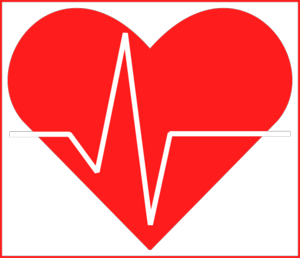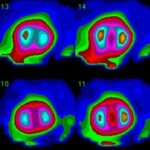The ejection fraction is an important tool in diagnosing heart failure, and determining how well your heart is pumping with each beat. It is a measurement of the amount of blood the left ventricle pumps out, or ejects, with each contraction, or beat.
Since the left ventricle of the heart is the largest and the main pumping chamber, the term ejection fraction, or EF, generally refers to the left ventricular ejection fraction. The EF consists of two separate calculations, one for each side of the heart, resulting in a separate percentage for the left ventricle (LVEF) and the right ventricle (RVEF), but in almost all cases, the measure of the LVEF is the important number.
A healthy heart has a normal LVEF, expressed as a percentage, and ranges from 50-75%. This is an indication that the left ventricles pumps out between 50 and 75% of its blood volume with each heartbeat. Medical experts consider an EF of less than 50 to be below normal, and can be due to damage to the heart muscle from a heart attack, heart muscle disease (cardiomyopathy) or other less common conditions. An EF of 35-40% may confirm a diagnosis of systolic heart failure. If the EF is less than 35%, the patient can be at risk of having life-threatening arrythmias, or irregularities in the heartbeat, and this can cause sudden cardiac arrest and death. For these patients, a physician may recommend an ICD, or implantable cardiac defibrillator. It is interesting to note that the EF can change, up and down, depending on the specific heart condition and treatment.
The term heart failure, sounds as if the heart is no longer working, as if it is failing. A more accurate explanation is that the heart attempts to adapt, when it is unable to pump adequate oxygen and nutrients through the blood to meet the needs of the body. The heart’s chambers stretch to hold more blood volume, and hormones release into the bloodstream to improve the pumping ability of the heart. This provides temporary relief, but over time, the heart muscle walls weaken and/or stiffen.
Patients with diastolic heart failure may have a normal ejection fraction. When the heart muscle has thickened and stiffened from disease, the ventricle holds a smaller than normal amount of blood, and although the percentage of what is pumped out may be normal, the volume is too low to provide adequate perfusion to the body.
There are a number of tests available to measure ejection fraction. Examples of these tests include ultrasound of the heart, known also as an echocardiogram. This is the most frequently performed test, as it is noninvasive and can be done at the bedside or in a physician’s office. There are also Cat Scans, MRI’s, nuclear medicine scans, also known as MUGA scans, also known as nuclear stress testing, and finally cardiac catheterization. A cardiac catheterization is not typically performed to simply measure the ejection fraction of the heart; however if a patient is undergoing this invasive procedure for other diagnostic or treatment reasons, then the EF is measured as part of the procedure.
The importance of knowing the ejection fraction percentage relates to the diagnosis of heart disease, particularly heart failure. There are numerous modalities for the treatment of heart failure, and the physician and patient can discuss these together to determine the best treatment options for each individual.
http://www.americanheart.org/presenter.jhtml?identifier=3065 321
http://my.clevelandclinic.org/ heart/disorders/heartfailure/ejectionfraction.aspx





